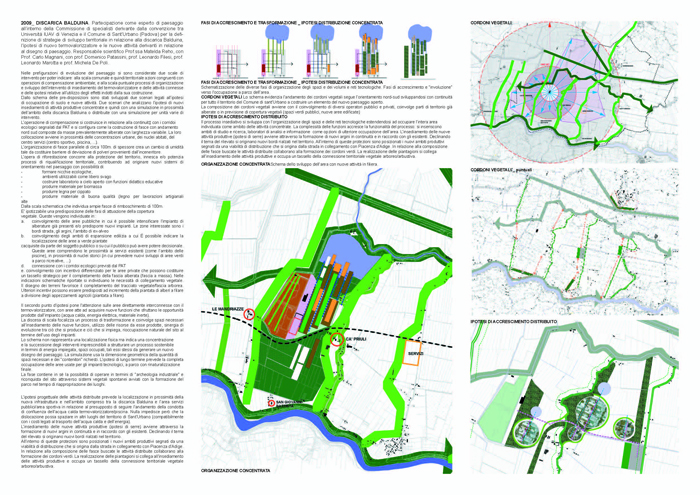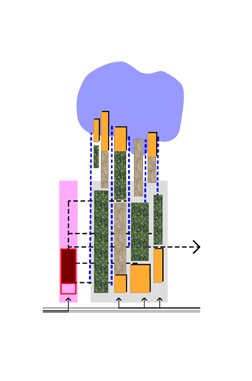In 2014 the Balduina Refuse Disposal Site will see the end of its life cycle. A commission of experts define the plant’s possible development scenarios for the treatment of non-dangerous refuse for Balduina, providing information and simulations regarding: the types of possible plants, the technology available for the plants, the environmental emissions, the eventual impact on the health of the citizens, the economic development of the area, the possibility of environmental mitigation or the landscape transformation induced by the presence of the plant.
In terms of landscape the course undertaken to localise (not as a geographical position but as a succession of connected activities) and structure (not in the form but in the complexity of the actions involved) the simulations with the Refuse Disposal Plant, the incinerator and the economic activity obtained, was formed after a phase of detailed research into the landscape conformation regulations.
Observation of the places were necessary to arrive at and individualise the composition elements of the vast area, intended both from a functional and formal point of view.
In the evolution prefigurations of the landscape two scales of intervention were considered to be able to indicate to the municipality scale and therefore territorial actions congruent with environmental compensation operations, and to the precise organisation processes scale and development of the intervention for taking possession of the incinerator and of the hypotheses relative to the utilisation of the effects obtained from its construction.
The scale descent focuses on a transformation process and involves spaces necessary to taking possession of the new functions, utilisation of the resources produced from them, evolution synergy between what it produces and what it employs, and the natural reoccupation upon termination of the use of the plant.
The scheme does not represent a physical localisation but indicates the succession of unavoidable interventions to structure a sustainable process in terms of energy employed, space occupied, in such as these things themselves generate a new design of the landscape.
The long term hypothesis foresees the complete occupation of the areas used for economical technological plants, with final renaturalisation. The phase contains within it the possibility to operate in terms of ‘industrial archeology’ and gain back the site through spontaneous plant systems beginning with the formation of the park in the re-appropriation time of the places.
Studio Commission
Sant’Urbano Administration
Veneto Region Direction – Environmental Protection
ARPA Veneto, Refuse Observatory
Sintesi Srl
Mario Negri Institute
Università IUAV di Venezia: Carlo Magnani, Matelda Reho, Michela De Poli, Leonardo Filasi, Leonardo Marotta, Domenico Patassini
![[09-227] 5_Linee di protezione astratt b](http://www.madeassociati.it/wp-content/uploads/2011/05/09-227-5_Linee-di-protezione-astratt-b.png)


